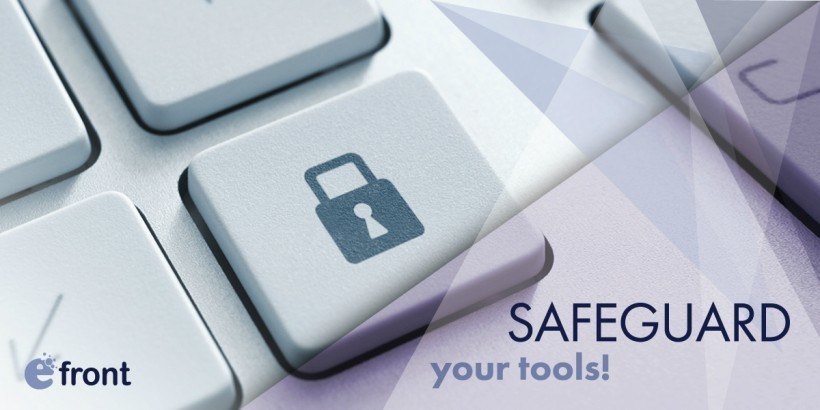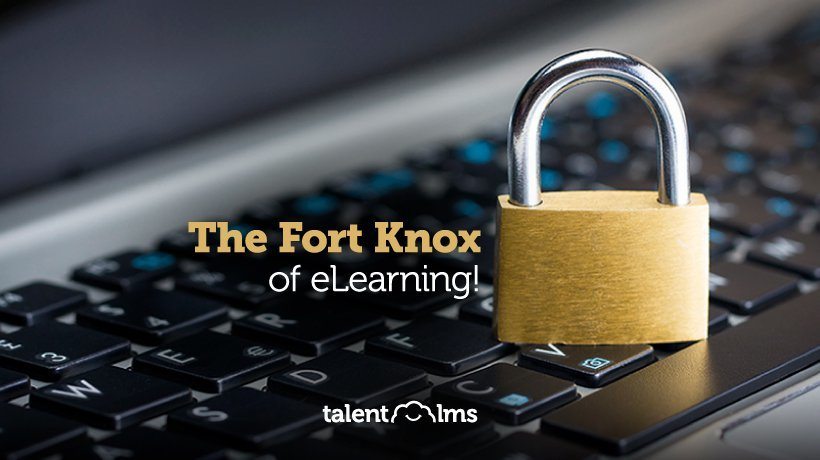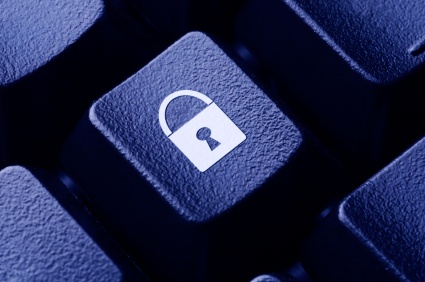LMS Security Features That Will Keep Your Data Safe And Sound
Your eLearning course contains sensitive information, user data, and other content that must be kept from prying eyes. Thus, it may seem counterintuitive to choose a cloud-based LMS that stores everything online. But most modern Learning Management Systems have advanced safety protocols in place to ensure that your information is under virtual lock-and-key. From blockers and cutting-edge authentication measures to restricted domain access. These 8 LMS security features can help keep your data safe and sound.
1. IP Blocker
Blockers prevent hostile or unwanted IP addresses from accessing your data. The admin is able to manually add certain IP addresses to the “allowed” or “blocked” lists. This ensures that known virtual attackers cannot unlawfully view your user data or eLearning content via the LMS. The downside is that they can always use another IP address to work around the blocker, which is why it’s so essential to put other preventative LMS security measures in place.
2. Advanced Password Authentication
When users log in to the LMS, their usernames and passwords are transmitted to a remote access server as an all-in-one file. There may also be other protocols involved to ensure that only authorized users are able to access the data. For example, online learners are only able to make an attempt three times before the system locks them out. This helps to prevent hackers or other hostile sites from guessing the password. In some cases, users must type in a code or displayed prompt to prove they aren’t a bot.
3. Anti-Spam
This LMS security feature prevents spam that has the potential to capture user data and compromise sensitive information from entering the Learning Management System. This involves phishing, malware, and even ransomware. As such, your online learners don’t have to worry about fraudulent spammers getting a hold of their contact details or sending them potentially dangerous emails.
4. Domain-Based Registrations
Online learners are only able to register for the LMS through domains specified by the admin, such as a subdomain of your main corporate site or a dedicated eLearning portal. You can also combine this with password protected domains to further enhance LMS security. For instance, provide online learners with the URL and a password they must use to access the site.
5. Anti-Virus
Viruses have the potential to corrupt data, steal sensitive information, and wreak havoc on your LMS UX. Learning Management Systems equipped with anti-virus software help safeguard your user data and eLearning content from the most common virtual threats. They might also have a built-in virus checker so that you can manually scan the system periodically. For further information, you can explore additional antivirus software solutions such as McAfee Antivirus by reading here.
6. Back-Up Data Storage
The system automatically backs up your data and allows you to manually save the most current version of your eLearning content. As such, if your data is corrupted by malware or is accidentally erased for any reason, your data is still secure. Keep in mind that backup protocols vary based on the LMS vendor. For example, some may conduct nightly backups and store the information to a distributed storage service, while others have dedicated servers of their own.
7. Data Encryption
Encryption ensures that your data stays safe when it is transmitted between apps. The LMS should use the Advanced Encryption standard that enables you to transmit information from your LMS to other platforms, as well as the LMS vendor’s server. This also allows you to integrate your system with third-party tools without having to worry about compromising your data.
8. Mobile Security
With more and more online learners making the switch to mobile, it’s crucial that your new LMS has mobile security features. This includes data encryption, mobile user authentication, and anti-virus/spam protection. Which also comes in handy if you plan to launch a mobile app for anytime, anywhere learning.
Top Tips To Keep Your LMS Data Secure
1. Conduct Regular LMS Security Check-Ups
Periodically test out the LMS security protocols yourself to make certain everything is in working order. For example, log in to the system from a mobile device to evaluate the password authentication and encryption security features. Or try to access eLearning content from an address you’ve added to the blocked IP list or an unregistered domain. You should also do a weekly or monthly clean-sweep of outdated data so that the system backs up the essentials. This also makes it easier to keep your information organized so that you can quickly find relevant content or user data.
2. Ensure That Software Security Protocols Are Updated Frequently
The LMS vendor must update the LMS security features on a regular basis to keep up with modern threats. For example, new viruses or spamming tactics that put your data at risk. The system may automatically update these protocols, or you’ll have to visit the LMS vendor’s site to download the latest package. If they haven’t made any modifications for quite some time, contact them directly to inquire about their current LMS security measures. You should also do your due diligence and stay informed about the latest online safety concerns, such as widespread malware or ransomware attacks.
In addition to asking the LMS vendor about the safety measures they have in place, set up an LMS free trial to test the security features firsthand. You should also verify which protection protocols are part of the package. Some LMS vendors charge an additional fee for advanced LMS security options but consider the costs associated with data theft and virus removal. Not to mention, the credibility your organization might lose if sensitive information falls into the wrong hands.
Have you created a requirement list for your new LMS platform? Have you factored in all its costs? Can you really afford your top LMS contenders? Download the free eBook How To Buy The Right LMS: The Complete Guide to discover the top criteria for choosing the best LMS for your organization having all possible LMS hidden fees in mind, as well as the LMS reports you should look for in a new LMS.








